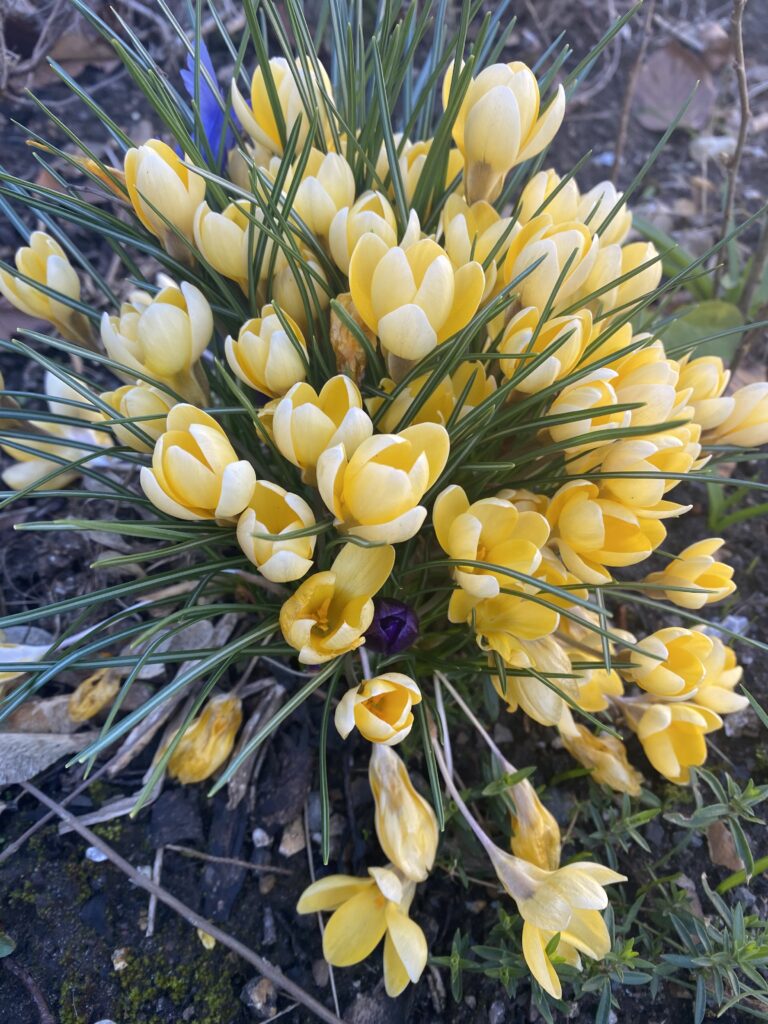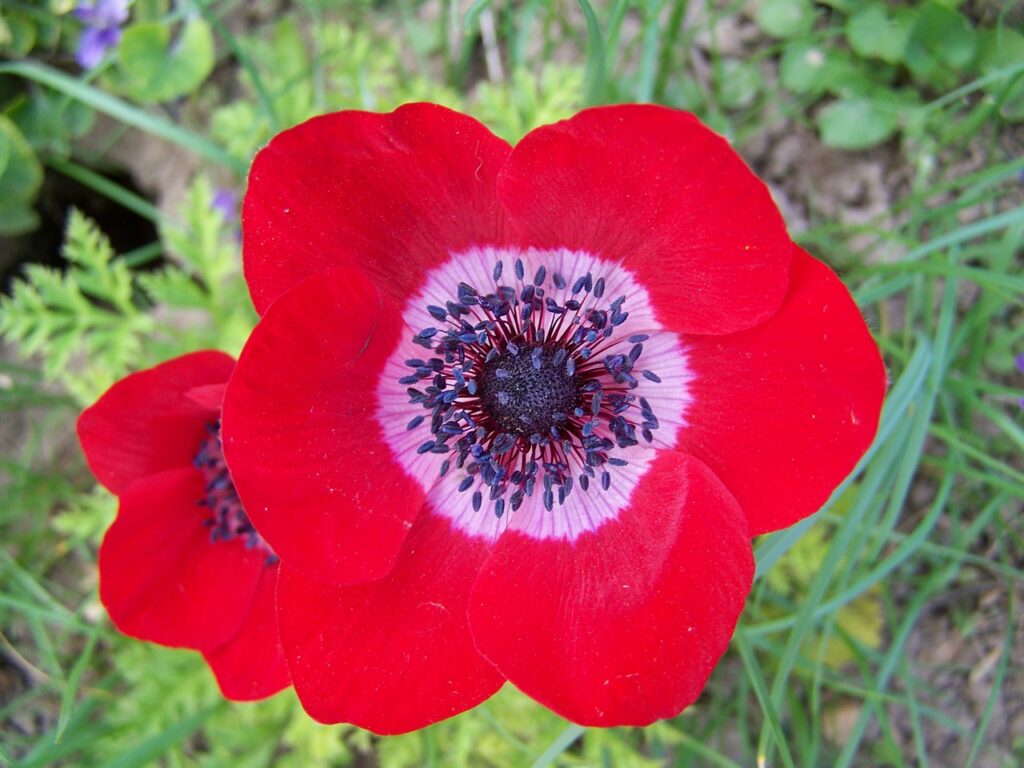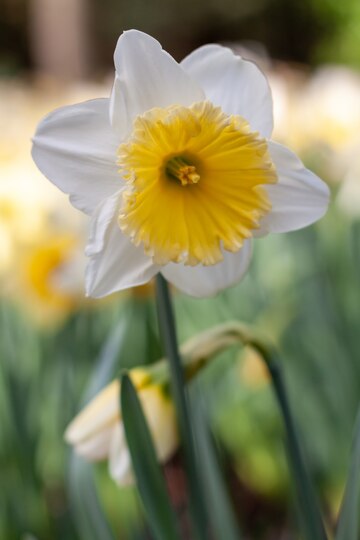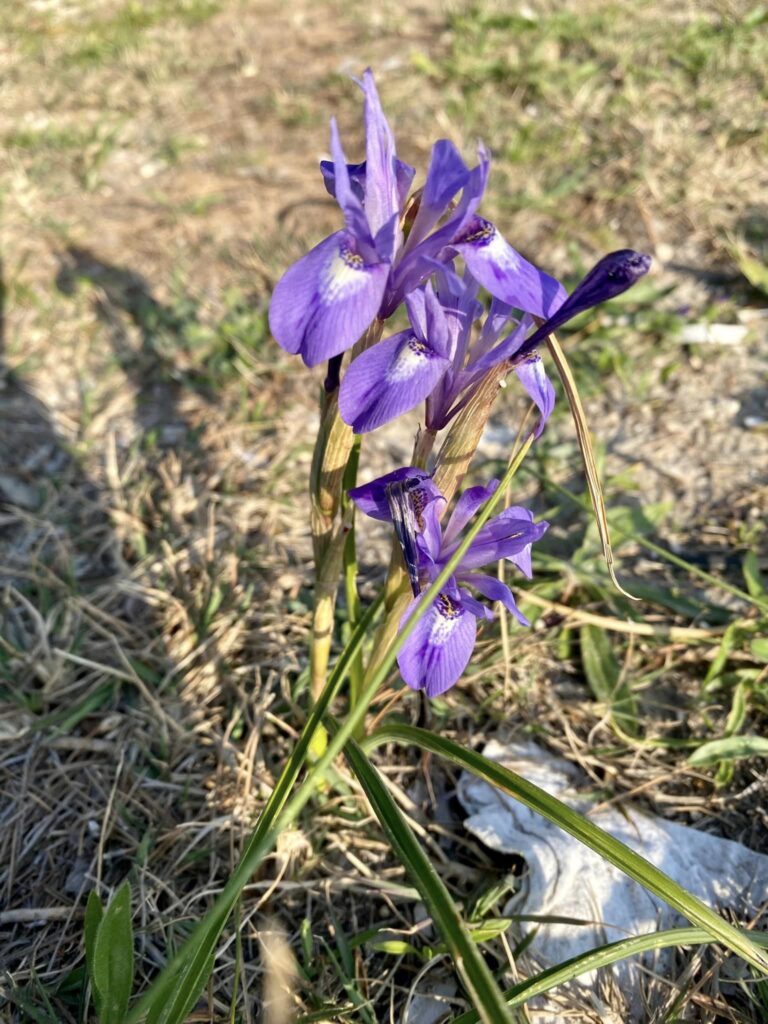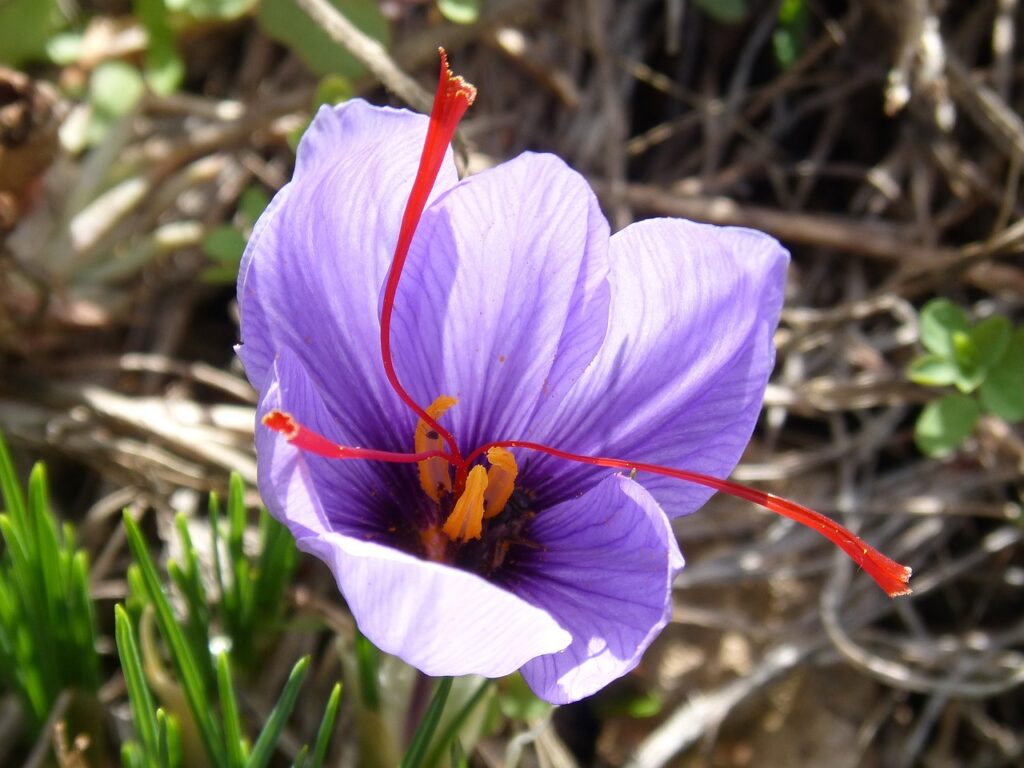I like to joke with my friends – especially with the ones who know how much I love Greece and its culture – that everything has Greek origin. Quite often, this turns out to be true. Some of our beautiful spring flowers are named after the characters of Greek mythology.
Hyacinth
This fragrant beauty got its name from a very attractive Spartan prince, Hyakinthos. He was so beautiful that both Zephyros, the God of the West wind and Apollo – the God of the Sun, music and dance, prophecy, and poetry – admired him. As a good Spartan, Hyakinthos enjoyed athletics a lot. One day, he was practising throwing the discus with the Apollo himself. While he was running to catch the discus, the jealous Zephyros blew it towards him; the flying disc hit him on the head. Apollo tried to save the dying youth but even the God of plagues and healing could not succeed. Reluctant to let his beloved die, Apollo made a flower from the blood of Hyacinthus.
There is a little confusion here though because it is possible that the original flower was most likely a larkspur and not the flower that we call Hyacinth today. Since Apollo’s tears fell on the petals of the flower, the pattern of “Ai”, the Greek word expressing grief, was created. Even today, the purple Hyacinth represents sorrow, whereas the blue ones are symbols of loyalty and fidelity.
The Roman poet, Ovid in his famous Metamorphoses, describes this sad tale as an unfortunate accident and not as a murderous crime committed by Zephyros.
Either way, Hyakinthos became an important figure in ancient Greek culture, and he was honoured, particularly in Sparta throughout the three-day long Hyacinthia festival. The celebration included mourning rites, a commemoration of the youth’s death and a feast for his rebirth as a flower.
In the chronology of the Greek Myths, this remarkable youth was likely an early figure. The suffix “nth” suggests that his name originates from a Pre-Greek language (like the word labyrinth in the Minoan Minotaur myth), whereas historically he is said to be the grandson of the first king of the Spartan Kingdom.
Crocus
In February, just after snowdrops appeared in the woodland and some of the front gardens in our neighbourhood, a large patch of bright yellow and purple crocuses popped up at the corner of Clandon park. From a distance it looked as if a magical carpet had been unexpectedly draped over the grass.
There are multiple different types of crocuses. The most precious is the Crocus sativus, the saffron crocus – we use it to make our rice dishes or soups tasty and bright yellow. I am not a botanical expert, but these – decorating the corner – are most likely woodland or simple spring crocuses.
In Greek mythology, Crocus was a handsome youth – just like Hyakinthos – and suffered the same accident too. While playing discus with the messenger God, Hermes, the disc hit Crocus on the head causing a mortal wound. The grieving Hermes transformed him into the saffron flower, and the drops of his blood turned into the stigma (the part of the flower that pollen lands on).
It is quite common that Greek mythological tales have different versions: different eras, different places have their own alterations of the story. Crocus’ story is no exception.
For example, some sources refer to him as a Spartan prince, whilst others state that he is from Eleusis, in Attica.
According to another version, Crocus was in love with the beautiful nymph, Smilax. After a while, he became bored with the relationship and the Gods turned him into a flower for not truly appreciating the love of an immortal naiad.
Often called “the Gold of Greek Earth”, saffron crocus was a valuable spice in ancient Greece. It was popular for its colour, flavour, and medicinal properties. Saffron crocuses were sacred flowers in Minoan Crete. It was used to dye the clothing of high-ranking women, like priestesses and princesses. A Minoan fresco found in Thira, on Santorini Island, shows a woman dressed in a yellow garment, collecting saffron stigmas from crocuses. She is offering them to a priestess or goddess, seating in front of her.
The original Greek word “krokos” can be found in the Old Testament, in Homer’s writings and Sophocles, Aristophanes, Hippocrates all mentioned it in their works. Cleopatra used it in her cosmetics – of course she knew about it, she had Greek origins after all.
Even Zeus himself used this flower to seduce the beautiful Phoenician princess, Europa – who gave her name to our continent.
Despite Europa’s bad luck, saffron crocuses were used as protective charms. Spring crocuses are used in jewellery as a symbol of love.
In ancient civilisation, crocus was often used to decorate altars or as offerings to Gods or Goddesses.
In Switzerland, parents put a saffron around their children’s necks for protection. Albeit, we have to be careful with this beauty. Other than the saffron crocus, all other varieties are rather toxic. They can cause digestive problems, and even kidney or liver damage.
Red anemone
This poppy-like flower holds several meanings:
– it represents the loss of a loved one -its black centre can be seen as a black heart, a symbol of death,
– it can indicate the arrival of spring with its fresh breezes and smells,
– in the Victorian era they were used as an emblem of forsaken love.
As usual, we can find several different tales of this spring flower in Greek mythology.
The magnificent Goddess of Love, Aphrodite was deeply in love with the mortal Adonis, who was also remarkably attractive. A wild boar attacked the young men during a hunting trip. Despite his immortal lover’s best intentions to help, he died in her arms. His dripping blood blended with the Goddess’ sorrowful tears and turned into the anemone flower.
Here, I got very confused with all the different versions of this tale. The first source I found said that it was the jealous Ares who set the wild boar on Adonis, because his lover, Aphrodite spent far too much time with Adonis. In another story it was Artemis who wanted to punish Aphrodite for killing his beloved Hippolytus. Another one says that Apollo wanted revenge for blinding his son, Erymanthus. Or it might have just been an unfortunate accident.
To praise Aphrodite, women gathered every year in midsummer to commemorate this tragic loss at the Adonia festival. Throughout the celebrations, women sang, danced on their rooftops, and ritually mourned Adonis. They planted the “Gardens of Adonis” sowing fast-growing plants such as lettuce into pots. After the rooftop festivities, they went onto the streets, where they performed a funeral procession, before burying the remains of their Gardens of Adonis.
“Anemone” originates from the Greek word ἀνεμώνη (anemōnē) which means ‘daughter of the wind, therefore the flower is often called “windflower”. It is common knowledge that if the anemone closes its petals there will be rainfall soon. But what does this flower have to do with the wind? Where else lays the answer but in mythology? Another Greek myth explains that Anemona was a nymph who lived in the palace of the Greek goddess of spring flowers, Khloris (later also called Flora). Khloris’ husband, the God of the West Wind, Zephyros fell in love with Anemona. She became the lover of the wind God, no surprise she was called a windflower.
Khloris was not happy about this love triangle and banished Anemone from her court. That was not enough for Khloris, in her fury, she turned Anemone into a flower.
Iris
This elegant purple flower got its name from the Greek goddess of the rainbow, Iris. The Greek word means “the eye of heaven” as well as rainbow. The English adjective iridescent originates from it, meaning showing many bright colours changing with movement.
According to Hesiod, Iris was the child of the titan Thaumas and the oceanid cloud nymph, Elektra. Thanks to her parents she has a rich heritage that ties her to the sea and the sky. As the personification of the rainbow, Iris represents the bridge between the divine and mortal realms. The rainbow and its goddess serve as a reminder of the gods’ existence in the natural world, especially after a violent storm.
Iris had several important jobs. One of her roles was serving nectar to the Olympians, and she was also known to be a messenger of gods, usually Hera or Zeus. She would travel from Heaven to Earth on the arc of the rainbow in order to transport divine messages to mortals.
Some myths describe her as unmarried; others portray her as the wife of Zephyros with whom she had a son, Pothos, who represented desire.
Iris was not only considered to be one of the most beautiful goddesses, also had the nickname “swift-footed”. Just like Hermes, she could travel rapidly not just to Earth but also to the Underworld. Some legends mention her as the pitcher of the river Styx highlighting her role in oaths and rituals.
The Iris flower denotes faith, hope and wisdom. The name was also given to the centre of our eyes, reminding us that we each carry a little piece of Heaven inside.
Narcissus/Daffodils
This flower’s tale is the story of narcissism at its extreme. It is also a story of unreciprocated love. Love that turns into obsession and in Narcissus’ case into despair. There are many variations of this myth. I decided to follow the Roman poet’s – Ovid- path and start with the female protagonist, Echo.
Echo (her name means “sound” in Greek) was a mountain nymph, known for her love of chatting and bad manners. She often interrupted other’s conversations. Echo used her talkative nature to help Zeus, the King of the Gods, hide his love affairs from his wife, Hera. Whenever Hera was about to catch his husband cheating on her, Echo entertained the Goddess with a lingering story, giving Zeus time to escape.
It is well known from other myths that it is not wise to annoy Hera… She cursed Echo to only be able to repeat the last words spoken to her. This was a sincere punishment for a chatty nymph, but far less damaging than the self-destructive love she felt for Narcissus.
While Echo was wandering in the woods, she caught sight of the handsome Narcissus. She was entranced by his beauty and followed him from a distance wherever he went. The more she saw him, the more attracted she became to him. As Echo was unable to speak, she could not share her feelings with Narcissus. When they finally met in person, Echo just repeated his last words. The nymph tried to embrace him, but she was rudely rejected.
The heartbroken Echo ran away and hid in the forest. The thought of Narcissus’ cruel rejection was unbearable to her. Her intense feelings made her body wither away, only her voice remained in the forest. Still today, in a valley, between mountains, her voice can be heard – she will repeat the last words of our sentence if we shout loudly enough.
Echo’s tragedy did not go unnoticed. The Goddess of Revenge, Nemesis, was angered by Narcissus’ behaviour and decided to intervene.
While hunting in the forest, he was attracted to a calm and pure spring. It was so crystal clear that he could see his own image in the water. Staring at his reflection, he liked it so much that he was unable to move. Narcissus had fallen in love with his own vision. He desperately tried to hug the youth he saw but he realised that the subject of his obsession was no other than himself. The hopeless desire burned him from the inside, turning him into a beautiful yellow and white flower.
Even in the Underworld, he kept staring at his own image in the river Styx.
In Spring when fully in bloom, daffodils tend to bend their necks towards the ground, denoting Narcissus bending over to marvel at his own image in the water. Therefore, daffodils can represent vanity and unreciprocated love. In medieval times, daffodils – especially if they were dropped -represented death. They also symbolise inspiration, creativity, inner reflection, and forgiveness. Giving a bunch of daffodils to a loved one is said to ensure happiness, but never give a single flower as it can bring bad luck. They are the typical flowers for 10 year wedding anniversaries because they are the symbol of joy and cheerfulness.
Daffodils are the national flowers of Wales and the symbol of the Marie Curie Charity.
Narcissus bulbs are poisonous to animals and its sap can be toxic to other flowers, so it is better to put them in a separate vase. In Wales, daffodils are commercially grown as some of their alkaloids are used in medication to treat Alzheimer’s.
The psychological term, narcissistic personality disorder and narcissism also originates from this myth. It is a mental health condition in which people need and seek too much attention, want others to admire them and have an unreasonably high sense of their own importance.
